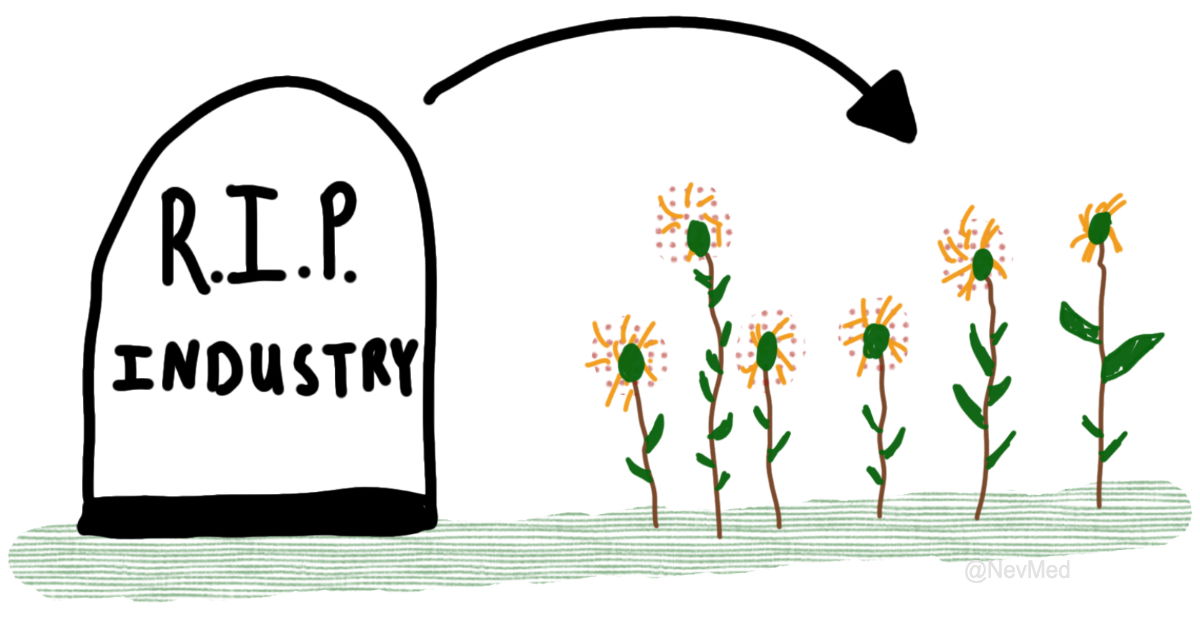Death of an industry then re-birth of another industry
Updated on

That drawing nails it: industries don’t just die—they compost into something new. For marketers, that’s a signal to spot opportunity in the ashes.
Marketing analysis
When one model collapses, customer needs don’t vanish—they shift. The winners (Netflix, Spotify, Uber) didn’t reinvent demand, they reimagined how to serve it faster, cheaper, and better. The gravestone is really a launch pad.
Why it works
- People love convenience more than tradition
- New tech lowers friction and raises expectations
- Businesses that adapt to behavior changes win
- Attention always follows the easiest experience
Examples
- Horse carriages → Cars → Tesla
- Blockbuster → Netflix
- Print → Social media content
- Landlines → iPhones
- Banks → FinTech apps
Every “death” you see? It’s just the start of someone else’s boom.